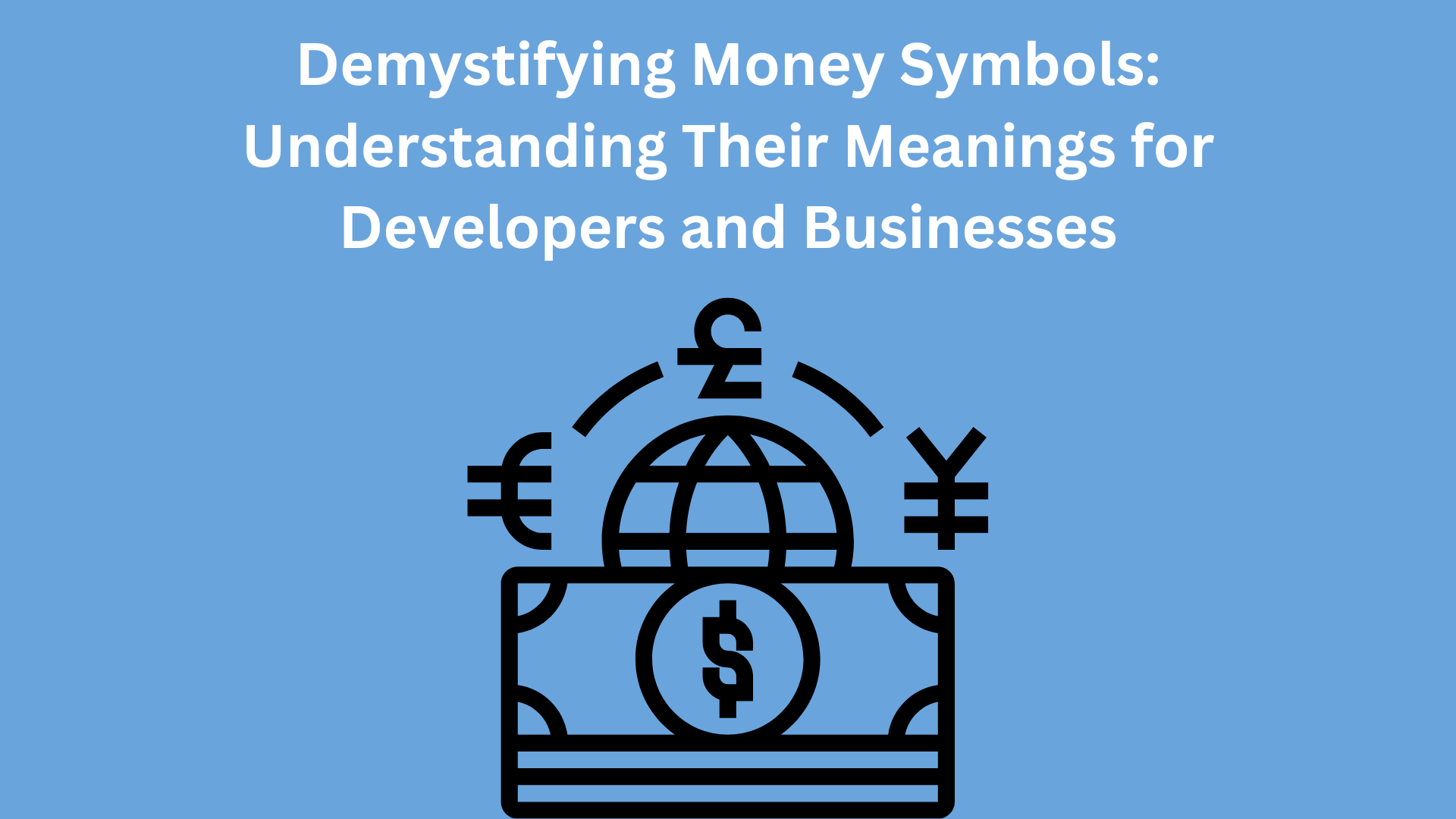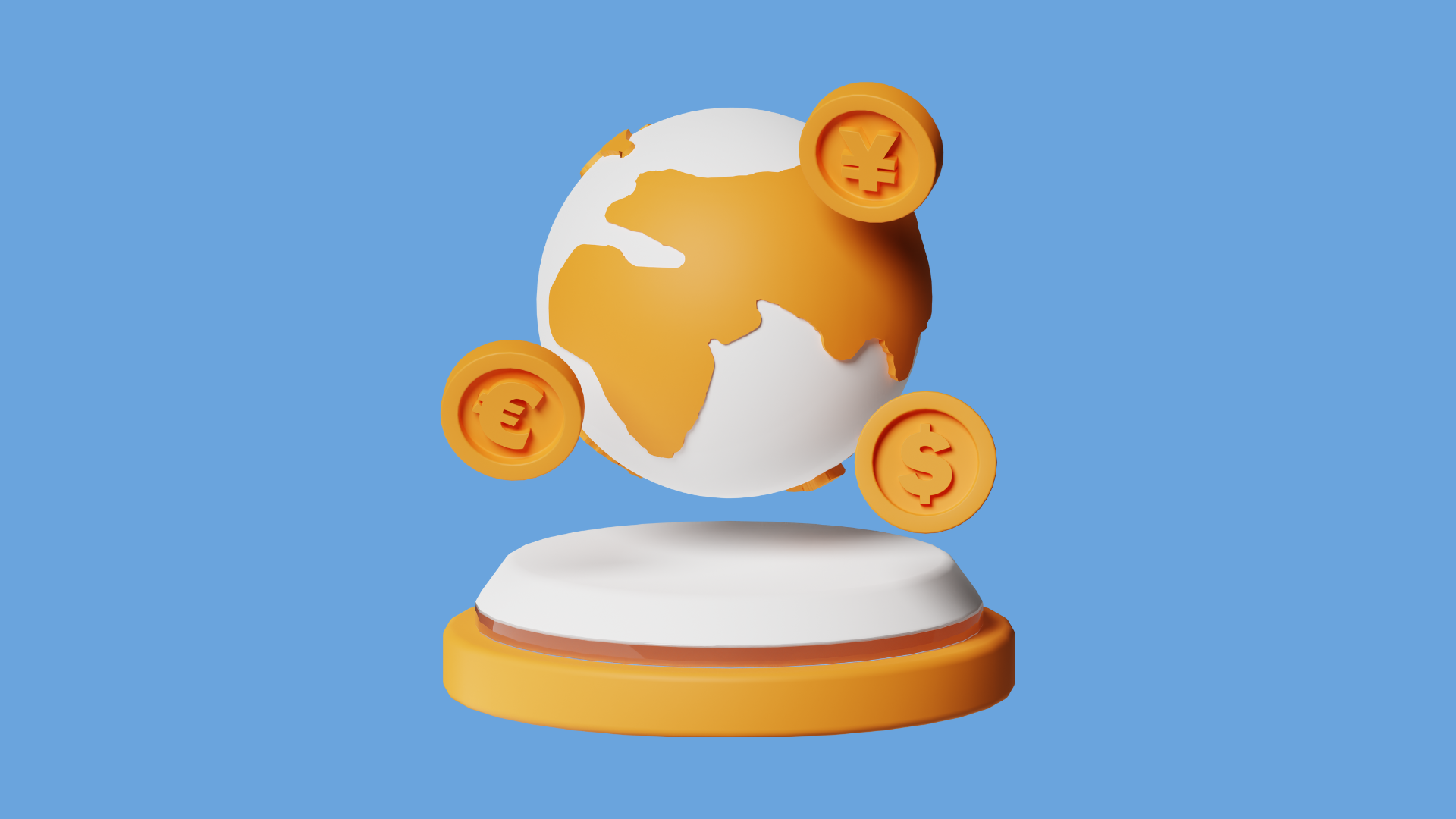Demystifying Money Symbols: Understanding Their Meanings for Developers and Businesses
In today's interconnected global economy, understanding the language of money is essential for developers and businesses alike. Currency symbols serve as the universal language of finance, conveying valuable information about transactions and monetary values. From the ubiquitous dollar sign to lesser-known symbols like the Indian rupee, each holds its own significance and history. In this comprehensive guide, we delve into the world of money symbols, unraveling their meanings and shedding light on their importance in the digital age.

The Dollar Sign ($)
The dollar sign ($) is perhaps the most recognizable currency symbol worldwide, representing the United States dollar (USD) and various other currencies pegged to it. Its origins trace back to the Spanish-American peso, with the "$" derived from the Pillars of Hercules, an ancient symbol of wealth and prosperity.
The Euro (€)
Introduced in 1999, the euro (€) symbolizes the European Union's single currency, used by 19 of its member states. The design features a stylized "E" representing Europe, with the two lines across symbolizing stability and the pursuit of prosperity.
The Pound Sterling (£)
Originating from the Latin word "libra," meaning scale or balance, the pound sterling (£) has been the official currency of the United Kingdom for centuries. The symbol "£" represents the letter "L" and evolved from the letter "L" crossed by a horizontal line.
The Japanese Yen (¥)
The Japanese yen (¥) symbol is derived from the Chinese character for "circle" or "round," representing coins. It signifies the Japanese currency's role as a unit of value and medium of exchange in the global economy.
Other Currency Symbols
Beyond these widely recognized symbols, numerous other currencies feature unique symbols, each with its own cultural and historical significance.
From the Indian rupee (₹) to the South African rand (R), these symbols reflect diverse monetary systems and economic landscapes worldwide.

Conclusion
Understanding money symbols and their meanings is crucial for developers and businesses operating in today's digital economy. Whether building financial applications or conducting international transactions, familiarity with currency symbols facilitates seamless communication and enhances user experience. By decoding these symbols, developers can create more intuitive interfaces, while businesses can navigate global markets with confidence.
Frequently Asked Questions (FAQs)
Q: Why are currency symbols important for developers?
A: Currency symbols serve as identifiers in financial applications, facilitating accurate representation and conversion of monetary values across different currencies.
Q: How can businesses benefit from understanding currency symbols?
A: Businesses operating in international markets must grasp currency symbols to accurately price products, manage finances, and navigate exchange rate fluctuations.
Q: Are currency symbols standardized across all platforms?
A: While many currency symbols are standardized, variations may exist depending on regional conventions and language settings. Developers should account for these differences in their applications.
Q: What resources are available for developers to integrate currency symbols into their applications?
A: Developers can leverage APIs provided by financial institutions and third-party services to access up-to-date currency information and symbols for seamless integration into their applications.
Q: How do currency symbols contribute to user experience in financial applications?
A: Clear and consistent presentation of currency symbols enhances user understanding and trust, fostering a positive user experience and driving engagement.